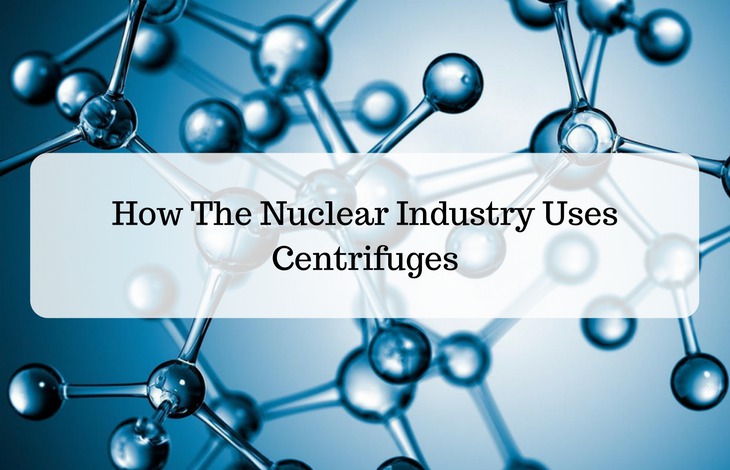
It seems like every time a country starts pushing for nuclear energy or weapons the media start talking about the presence of and use of centrifuges. It sometimes seems the thinking is – buy a centrifuge and then build a nuclear bomb. This could not be any further from the truth! It is a long and complicated process and centrifuging is just one step, plus there are many non-nuclear uses for centrifuges. Centrifuges are an important part in the production of useable nuclear material, and this is how it works.
Of course, we are not talking about the same type of centrifuges that are used in chemistry; these are industrial level centrifuges that are much bigger and a lot more powerful. These centrifuges are to your science class centrifuges what the Hubbell space telescope was to your telescope kit you probably used as a child.
These centrifuges are extremely powerful and are used to create nuclear materials. They can reach over one hundred thousand revolutions per minute and they are balanced in such a way that even if they are a few milligrams off keel, the entire machine, could, in fact, destroy itself. This type of centrifuge operates using magnets because the friction that is created when spinning at these speeds would create so much wear and tear and heat that the centrifuge would burn itself up after just a few uses.
When it comes to nuclear applications, centrifuges are used to separate the unusable from the useable materials. This all boils down to uranium. Mined uranium is processed into uranium oxide which consists of two different isotopes – U – 235 and U – 238. U- 235 is the only isotope that is usable for nuclear power plant fuel and weapons. Not only is U -238 unusable, but its mere presence can disrupt the uranium’s value.
Isotopes need to be separated in order for the usable U -235 to be extracted.
To extract the U -235 the uranium has to be put into a gaseous state, this is achieved by mixing it with acid. It is at this point the gas is added to the special centrifuge and spun out. During this process, the heavier and denser U -238 falls out of the solution and can be pushed along to the next step of the process. This is still a very long way from having the uranium necessary to create nuclear power or weapons.
To turn the uranium hexafluoride gas back into uranium metal you add calcium. The calcium reacts with the fluoride to create a salt, and the pure uranium metal is left behind. With a highly concentrated U-235 metal, you can either make a nuclear reactor or a nuclear bomb.
There are many different uses for industrial high-tech centrifuges beyond separating nuclear materials; they are also used for processing in the manufacturing, chemical and pharmaceutical industries. While these centrifuges are on a different scale than those used for nuclear material, they still get their respective jobs done.
Uranium is an element in many ways similar to iron, and just like iron, uranium is dug out of the ground and then processed to extract the pure uranium from the ore. When you have finished processing the uranium ore you are left with uranium oxide.
The creation of centrifuges for use in the nuclear industry is a huge technological challenge. Centrifuges as mentioned earlier need to spin very quickly – in the range of 100,000 RPM. To spin this fast centrifuges, need to
- Have very light, yet extremely strong rotors
- Have high-speed bearings that are usually magnetised to reduce any friction
- Have well-balanced rotors
Being able to meet these requirements have been out of reach for many of the countries of the world. However, the recent development of an inexpensive but high-precision computer controlled piece of machining equipment has made things a lot easier. It is for this reason that in recent years many more countries have started learning to enrich uranium.



